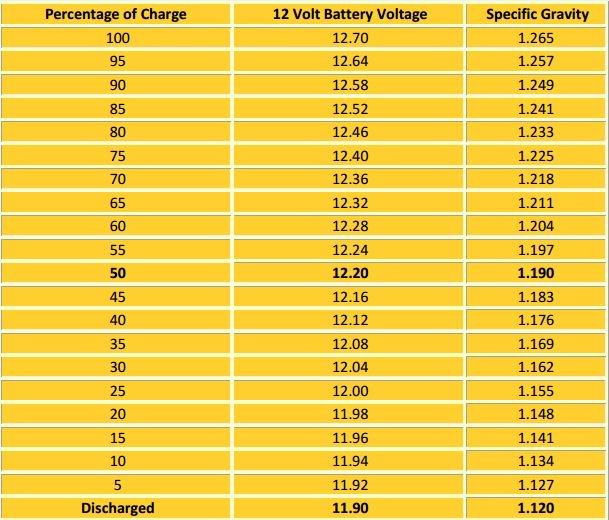condor22
Mike
Good luck with that, lol. I don't know of any solar regulator that will do it properly. AGM profile will work, but the long term affect on battery life is the unknown.


Nightjar said:Gravity, This technology is beyond my experience however this advertisement popped up;
https://www.ebay.com.au/itm/20A-Sol...-/313109450899?_trksid=p2349624.m46890.l49292
Gravity said:Found the correct charger but think i'm going to have to put on hold till the next camp out in March as I'm also after the 240V mains charger and 1000W Inverter :/
https://itechworld.com.au/collectio...p-intelligent-solar-regulator-with-lcd-screen
30 AMP INTELLIGENT SOLAR REGULATOR WITH LCD SCREEN
Regular price $39.00
ITECHBC40 BATTERY CHARGER 40 AMP 12V ITECHWORLD FOR CAR, BOAT, CARAVAN
Regular price$549.00 Sale price$499.00 Save $50.00
https://itechworld.com.au/collectio...er-40-amp-12v-itechworld-for-car-boat-caravan
INVERTER 1000 WATT 12V PURE SINE WAVE WITH REMOTE CONTROL ITECH1000W
Regular price$499.00 Sale price$249.00 Save $250.00
https://itechworld.com.au/collectio...t-pure-sine-wave-inverter-with-remote-control
Without knowing the solar input specs, the regulator below should suit.condor22 said:Good luck with that, lol. I don't know of any solar regulator that will do it properly. AGM profile will work, but the long term affect on battery life is the unknown.
bicter said:Without knowing the solar input specs, the regulator below should suit.condor22 said:Good luck with that, lol. I don't know of any solar regulator that will do it properly. AGM profile will work, but the long term affect on battery life is the unknown.
https://au.renogy.com/rover-elite-20a-mppt-solar-charge-controller/
I also understand, without doing deeper research, that the Plasmatronic Dingo 40/40 can be reprogrammed for lithium
condor22 said:bicter said:Without knowing the solar input specs, the regulator below should suit.condor22 said:Good luck with that, lol. I don't know of any solar regulator that will do it properly. AGM profile will work, but the long term affect on battery life is the unknown.
https://au.renogy.com/rover-elite-20a-mppt-solar-charge-controller/
I also understand, without doing deeper research, that the Plasmatronic Dingo 40/40 can be reprogrammed for lithium
I've checked the manual for this controller. From what I see the Li profile is one of Boost mode only and the output voltage is adjustable from 12.6 to 16 V.
In a normal AGM mode there are 3 stages Boost, Absorption and Float where volts and amps vary during the charge cycle. (I won't go into the detail, already done that.) However a LiPo Lithium deep cycle is best charged with one cycle, Boost. That's all it needs, but many chargers that state Li profile charge at the high end of voltage in the mid 14 volts.
With this controller, I would set the Li profile Boost voltage to 13.8 volts to give the best care of the battery. I would anticipate that if enough solar goes in, the battery would achieve the 98-99% charge level and that would be good enough for me.
Well found Bicter, It's the first Li adjustable controller I've seen. Will see what else I can find about it.Not a bad price either. $100.
Edit - I'll show my mate the specs, see what he says.

Condorcondor22 said:At $21 and no specs, not something I'd look at NJ. I'd want to protect close to $1,000 of investment with a bit more than a 20 dollar controller, lol.
Zoomed in on the pic and the controller states "Suits only Lead Acid, Open, AGM, Gel batteries". No mention of Lithium other than the Ebay iten Title.

